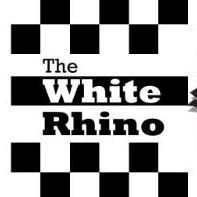DIY: How to paint your wheels?
A fresh looking set of wheels can make a big difference when it comes time to sell your car or maybe you just fancy a change of color to make your car that little bit more unique.
As with any work involving painting, surface preparation is the most important part. Even more so than the actual painting. Runs and drips in paint etc. can be sanded and polished out but if the surface below the paint isn’t good, you’ll never achieve a good finish.
How to: With the wheels removed from the car, give them a good wash and remove as much dirt as you can. Use a wire brush if the dirt is baked on or stubborn.
If there are any really rough bits on the wheel, kerbing damage, corrosion etc. use 80 grit sandpaper to dress them down nicely. If there are large dents or scrapes, you can use some body filler to fill them up. When the body filler is dry, use some 400 grit sandpaper to make it nice and flat, the same level as the metal.
Next comes the boring part. Sand the entire surface of the wheel with 400 grit sandpaper. The purpose of this is to ‘key’ the surface. Paint only sticks to rough surfaces. If you were to paint onto the original smooth finish of the wheels, chances are that it wouldn’t last and the paint would flake off. Make sure everywhere has been keyed, in all the little nooks and crannies.
The next stage is very important. You need to make sure the surface is completely dry and free of water. Use a heat gun to dry everything nicely. If you don’t have one, a hairdryer will do just fine.
Now you need to mask the tyre with tape so that it doesn’t get covered in paint. I find that if you wipe the tyre with thinners, it helps the masking tape to stick. Also mask the tyre valve and remove the wheel centre caps if you don’t want them painted.
Now you’re ready to paint. There’s two ways you can do it, silver and cheap or different colour and slightly more expensive. I’ll explain the silver method first.
You will need two tins of silver wheel paint. This doesn’t need primer or lacquer and will pretty much stick to anything you spray it on. Shake the can before you start and spray it on in nice smooth coats. Take your time, don’t make the coats too thick or the paint may run which will cause you headaches later. You can use the heat gun on a low setting or a hairdryer between coats to help them dry out. Leave the wheels for a few hours for the paint to harden, remove the masking tape and refit to the car.
If you are painting the wheels a different colour, you will need two tins of primer. Shake the tins well and spray it on in nice light coats, using the heat gun or hairdryer on each coat. Leave the primer to harden for a few hours. This will make it easier to sand and prevent the sandpaper from clogging up then you rub it down. Rub the entire wheel surface down with 600 or 800 grit sandpaper to key the surface for the colour coat. You will need two tins of your preferred colour. Shake the tins well and spray on, again using the heat gun or hairdryer between coats. When finished, leave the wheels to dry overnight. This step is very important or the lacquer and paint may react leaving you with a terrible finish. You will need three cans of lacquer. Start with a nice light dusting of the lacquer. Leave this to dry for an hour and build up the coats. You don’t want the lacquer to dry out completely between coats as each layer will gel together and eventually form one thick layer. If you want a really nice smooth finish, it will help to leave the wheels to dry for a few days before you fit. When the lacquer is sort of dry but sticky to the touch, you can leave them out in the sun and the lacquer will bake nice and hard.
**DISCLAIMER** I accept no responsibility for any harm, damage or poor paint finish caused by people painting their own wheels. This is just a guide to show you how simple it can be.






